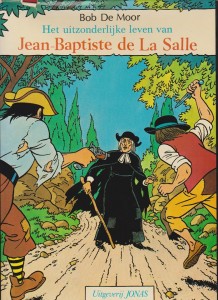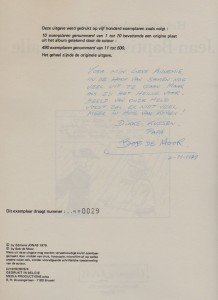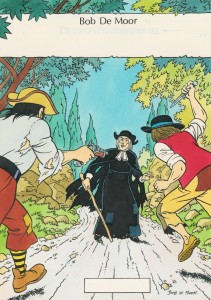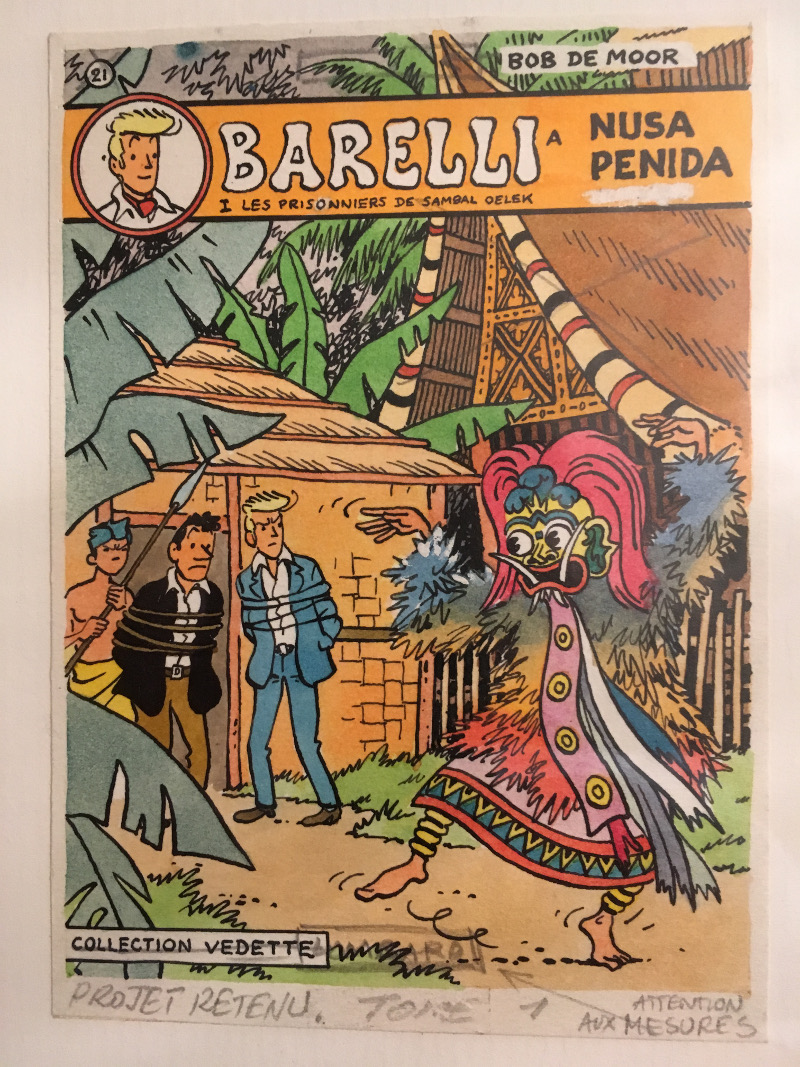In 1949 Flemish journalist and writer Gaston Durnez – who at that time worked at the daily newspaper De Nieuwe Gids – was asked to write a scenario for a comic based on the life of Jean-Baptiste de la Salle, a French priest, educational reformer, and founder of the Institute of the Brothers of the Christian Schools (respectively Broeders van liefde in Dutch and Frères de la Charité in French).
Since ‘Jean-Baptiste de la Salle’ as a title didn’t exactly sound even remotely interesting, Durnez changed the title into ‘De koene edelman, het leven van Jean-Baptiste de la Salle’ (Eng.: “The brave nobleman, the life of Jean-Baptiste de la Salle”). That might have sounded good in 1949, but for the album edition 30 years later, publishers Jonas (1979) and Procure/Broeders van de Christelijke scholen (1980) would go for the more adventurous title “Het uitzonderlijke leven van Jean-Baptiste de la Salle” (Eng.: “The extraordinary life of Jean-Baptiste de la Salle”). The later released album editions would also be released in French as “La vie extraordinaire de Jean-Baptiste de la Salle”, for the French speaking readers in Belgium.
But back to 1949. The comic would be published in the weekly ‘t Kapoentje (issues 18 1949 to 49 1949) which was especially made for Christian schools. Editor-in-chief was a certain Marc Neels (yes, aka Marc Sleen, the father of Nero) and Bob De Moor was asked to draw the comic, presumably via the Artec connection, the company he had started together with his brother-in-law John Van Looveren. De Moor would fit the life of Jean-Baptiste de la Salle in 32 pages.
At that time it was rather common that comics were made about religious people. The church saw it as a way to tell the stories (and up to the mid-eighties these comics would be distributed in catholic schools in Belgium). Other comics authors would tackle similar subjects such as Willy Vandersteen, Marc Sleen, Jef Nys (who drew several religious comics), Jijé (his “Don Bosco” became widely known), Sirius etc..
On the left you see a (Jonas hardcover) copy signed by Bob De Moor for his then 30-year old daughter Annemie De Moor. The Dutch inscription which Bob De Moor wrote in the copy (holding number 29 of 500) says: “To my dear Annemie, hoping that we will be be spending a lot more time together. But if she follows the holy example of our hero, then I fear the worst! Big kisses. Daddy”.
The album style itself is one step closer to the detailed approach we would see later that year in his masterpiece “De Leeuw van Vlaanderen”. Sure thing is that Bob De Moor‘s craftsmanship improved on a daily basis. The hesitating lines from this Jean-Baptiste de la Salle album are are no match to the masterpiece that is “De Leeuw van Vlaanderen”.
Note that the cover of the Jean-Baptiste de la Salle album was drawn in 1979, hence the difference in style with the 1949 content. You will also notice that the final cover was trimmed on the edges compared to the original cover you see on the left.
Small detail, in the comic album editions you’ll see both ‘Bob De Moor’ & ‘Bob de Moor’ (spelled with a small ‘d’). The error is recurrent in many books (and also created confusion with us as far as what was the official spelling). The correct spelling is Bob De Moor.
Thanks to Luc De Meulenaere for the scanned cover and inscription.




